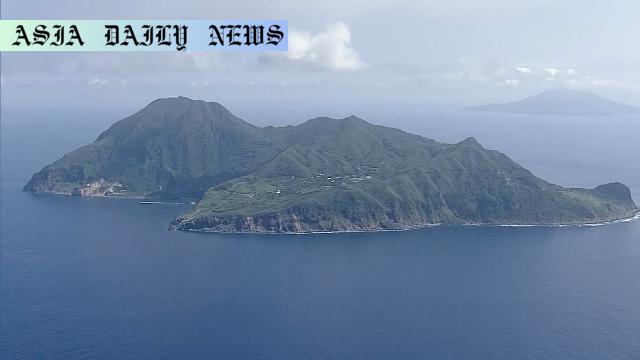Earthquake: Kagoshima Prefecture suffers intense tremors, safety confirmed for 23 residents on Akuseki-jima. No tsunami threat.

Overview of Earthquakes in Kagoshima’s Akuseki-jima
The Kagoshima Prefecture in Japan’s southwestern region has been rocked by a series of intense earthquakes, including two recent tremors measuring magnitudes of 4.8 and 5.4. According to the Japan Meteorological Agency (JMA), these earthquakes occurred on Sunday at 2:01 p.m. and 2:07 p.m. respectively. Both were assigned an intensity of upper 5 on Japan’s seismic scale, which ranges from 0 to 7. While the quakes were impactful, JMA has assured residents and authorities that no tsunami threat exists. These tremors add to a series of intense seismic events in the region that have been ongoing since last month.
Impact on Akuseki-jima’s Residents
Akuseki-jima, a small island that forms part of the Toshima village in the Tokara Islands, is home to only 23 residents. Local officials have confirmed the safety of all inhabitants following the recent quakes while continuously monitoring the evolving situation. The residents, although shaken by the recurring quakes, have remained resilient amidst the rising seismic tension. Indeed, this is not the first time Akuseki-jima has faced such adversity, as a magnitude 5.4 quake with a similar intensity struck the island on Saturday morning. The seismic frequency has put emergency protocols to the test, ensuring the safety of all inhabitants.
Recent Seismic Trends Near the Tokara Islands
Seismic activity in the Tokara Islands has remained notably high over the past month. On July 3, Akuseki-jima experienced a significant tremor with an intensity of lower 6, which served as a precursor to the current wave of seismic events. The geographic location of the Tokara Islands, positioned along tectonic fault lines, makes this region particularly susceptible to frequent earthquakes. While local authorities and scientists have not identified any immediate escalation risk, they continue to advise preparedness and regular safety measures. Such recurring seismic activity highlights the importance for residents and local governments to be fully equipped to confront natural disasters.
Preparedness and Resilience
Japan’s earthquake preparedness systems offer a solid level of security during such emergencies. The JMA swiftly issues real-time updates on seismic activity, enabling residents and officials to take immediate action. Additionally, the country maintains a robust infrastructure for disaster prevention, including reinforced buildings, safety drills, and an efficient communication network to relay warnings. As these earthquakes continue, the island’s residents are maintaining vigilance while officials ensure their safety. This situation also underscores the necessity of continued seismic monitoring in vulnerable regions.
A Comprehensive Strategy Needed
The recurring seismic activity in regions like Kagoshima highlights the need for a comprehensive disaster mitigation strategy. For the residents of Akushiki-jima, stricter building guidelines, better early-warning systems, and continuous government support can help alleviate concerns stemming from natural disasters. Greater awareness about evacuation protocols and disaster management training may also equip residents in rural locations for future incidents. It is imperative that Japan—known for its advanced disaster readiness—takes even more proactive steps to not only safeguard its people but also inspire other nations at risk of similar natural calamities.
Commentary
Assessing the Situation on Akuseki-jima
The recent series of earthquakes on Akuseki-jima serves as a sobering reminder of the power of nature and the resilience required to endure such adversity. While the prompt response by officials in Toshima village to ensure the safety of all 23 residents is commendable, the psychological impact of these recurring events cannot be underestimated. Coping with the constant threat of earthquakes requires immense fortitude, and as such, the villagers deserve both local and international support to rebuild confidence in their safety.
The Need for Long-Term Mitigation Strategies
While seismic activity is an inherent risk due to Japan’s location along the Pacific Ring of Fire, the situation in the Tokara Islands underscores the importance of long-term planning and preparedness. Investing in reinforced infrastructure, improved warning systems, and public education campaigns can significantly mitigate the risks posed by such events. Furthermore, the government could explore opportunities to collaborate with international experts on earthquake research to enhance predictive tools and disaster management frameworks. This holistic approach would not only safeguard lives but also reduce economic and psychological damage.
A Call for Collective Responsibility
Surviving in an earthquake-prone region calls for collective responsibility from various sectors, including the government, private organizations, and the general populace. While the government’s swift action to confirm resident safety on Akuseki-jima was reassuring, sustained efforts are required to protect similar vulnerable communities across Japan. Private organizations can also contribute by funding research and providing essential disaster relief resources. On an individual level, fostering awareness about earthquake preparedness could make a world of difference during emergencies. Together, these efforts would significantly enhance community resilience against natural disasters.


